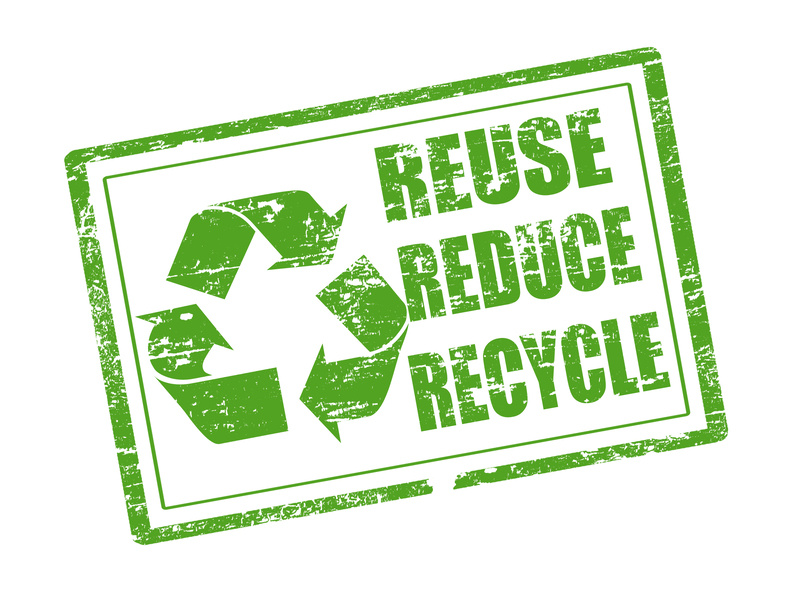Reducing Office Waste: Simple Practices for a Sustainable Workplace
Reducing office waste is not just a trend -- it's an essential practice for creating a sustainable, environmentally-friendly workplace. Organizations around the world are seeking innovative solutions and simple strategies to minimize waste in office environments. Not only do these efforts support environmental responsibility, but they also cut costs, boost employee morale, and enhance your company's reputation.
In this comprehensive guide, we'll explore easy-to-implement waste reduction practices that will help transform any office into a model of sustainability. From smart purchasing to waste segregation, you'll find actionable tips and real-world examples to inspire your journey toward a greener workplace.
Why Office Waste Reduction Matters
Every year, offices generate massive amounts of paper, plastics, electronics, and food waste. According to the Environmental Protection Agency (EPA), commercial office buildings in the United States alone produce millions of tons of waste annually. This not only contributes to overflowing landfills but also increases greenhouse gas emissions and depletes natural resources.
- Reduces landfill burden and pollution
- Saves money on waste disposal and procurement
- Demonstrates corporate social responsibility (CSR)
- Promotes a healthy, productive workplace culture
By adopting sustainable office practices, your organization can dramatically decrease its environmental footprint and pave the way for a better future.

Assessing Your Office Waste
Conduct a Waste Audit
Before implementing waste reduction strategies, review how much and what types of waste your office produces.
- Collect waste data for a set period (one week or one month)
- Sort and weigh waste in categories like paper, plastic, food, electronics, and general trash
- Identify areas with the highest waste generation
This audit allows you to set realistic goals and focus your efforts on the most impactful areas.
Smart Purchasing & Resource Management
Select Eco-Friendly Office Supplies
One of the most effective ways to reduce office waste is by being mindful at the source. Choose supplies that are reusable, recyclable, or made from recycled materials.
- Buy recycled paper and products with minimal packaging
- Opt for refillable pens and markers
- Purchase energy-efficient electronics
- Encourage suppliers to use eco-friendly packaging and shipping materials
Embrace Digital Solutions
Paper use remains one of the largest contributors to office waste. Moving towards paperless workflows not only saves trees but also boosts productivity.
- Use cloud-based platforms for document sharing and collaboration
- Digitize invoices, receipts, and internal reports
- Encourage double-sided printing and set office printers to default duplex mode
- Implement e-signature solutions
Optimizing Office Waste Collection
Set Up Clear Recycling Stations
Make recycling easy and intuitive for everyone in the office. Place well-marked bins for paper, plastic, metals, e-waste, and compostables in accessible locations.
- Use color-coded labels and clear instructions
- Regularly communicate recycling guidelines to employees
- Ensure cleaning staff are trained on proper sorting
Compost Organic Waste
Food scraps and coffee grounds account for a significant portion of office waste. Set up a composting program in your break room or kitchen, either by partnering with local composting services or managing an on-site bin.
- Collect fruit peels, coffee grounds, tea bags, and plate scrapings
- Use compostable bags and containers
- Engage employees with signs explaining what can and can't be composted
Encouraging Employee Participation
Educate and Empower
Lasting change starts with a motivated team. Regularly educate your staff about the importance of waste reduction and how they can contribute.
- Host sustainability workshops and lunch-and-learn sessions
- Share eco-friendly tips in office newsletters
- Assign green champions or committees to lead initiatives
Create a Culture of Accountability
- Set measurable waste reduction targets and share progress updates
- Recognize departments or individuals who contribute outstanding ideas
- Provide feedback opportunities for staff to suggest improvements
Reusing, Repurposing, and Donating
Encourage Reusable Items
Invest in office-wide use of items such as:
- Reusable coffee cups and water bottles
- Personalized mugs and cutlery
- Sturdy, washable dishware instead of disposables
This simple switch can reduce single-use plastic waste dramatically over time.
Repurpose Office Items
- Repurpose old folders and boxes for storage
- Use scrap paper for notes and drafts
- Turn broken furniture into creative office decorations or fix it for continued use
Donate Unused Equipment
When upgrading office equipment or furniture:
- Donate old computers, printers, and chairs to schools, charities, or non-profits
- Organize office supply swap days so staff can exchange surplus materials
These actions extend the life cycle of office products and support local communities.
Rethinking Office Events and Catering
Plan Low-Waste Meetings and Celebrations
- Serve food on reusable dishes whenever possible
- Order just enough food to avoid excessive leftovers
- Encourage attendees to bring their own utensils and water bottles
- Provide recycling and composting bins at event venues
Work with Sustainable Vendors
- Choose caterers committed to zero-waste practices
- Source from local, seasonal, and organic food suppliers
- Request minimal or compostable packaging from all vendors
Smart Technology for Waste Reduction
Leverage Energy-Saving Devices
Lowering energy consumption is another component of reducing office waste. Switch to LED lighting, install smart thermostats, and replace single-use batteries with rechargeable alternatives.
Utilize Waste-Tracking Apps
Modern software solutions can help track your progress and identify new ways to minimize waste. Many apps provide tailored tips, monitor recycling rates, and suggest actionable steps based on your unique office setup.
Case Studies: Real-World Examples
Tech Company Cuts Paper Waste by 80%
A mid-sized software firm in San Francisco implemented a paperless policy by adopting electronic signatures, cloud storage, and digital notetaking. Within a year, the company reduced paper purchases by 80%, saving both money and valuable storage space.
Law Office Sets Up Composting Program
A law firm in Boston partnered with a local composting provider to collect organic waste from the office kitchen. Employees trained in proper sorting, and the firm now diverts almost one-half ton of food scraps from landfill each month.

Measuring and Reporting Success
- Track monthly and quarterly progress on waste reduction goals
- Regularly communicate results to staff and stakeholders
- Celebrate milestones and set new, ambitious targets
This transparency not only keeps momentum high but also demonstrates your commitment to a sustainable office environment.
Conclusion: Simple Steps Make a Big Difference
Building a zero-waste office doesn't require massive overhauls. By starting with simple, sustainable practices and engaging your team, your organization can have a significant positive impact on the planet -- and your bottom line.
- Assess your current waste footprint with an office audit
- Purchase wisely and embrace digital solutions
- Organize clear recycling and composting stations
- Empower employees to participate and lead initiatives
- Repurpose, reuse, and donate rather than discard
- Rethink office events with sustainability in mind
- Measure, report, and celebrate your progress
By following these simple strategies, your company will be well on its way to reducing office waste and fostering a culture of sustainability for years to come.